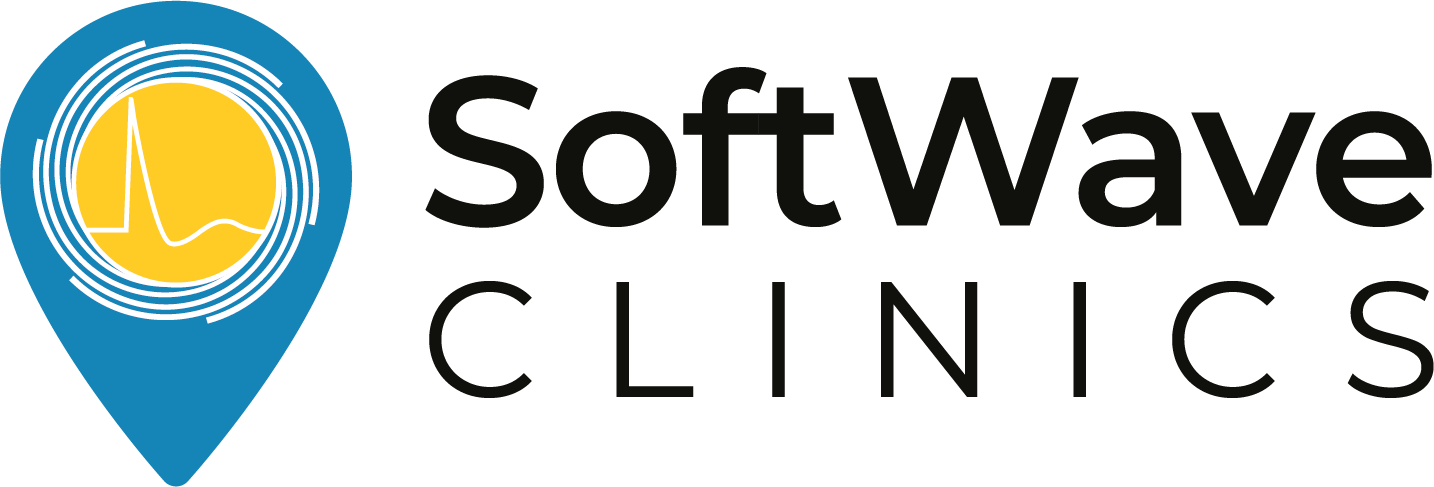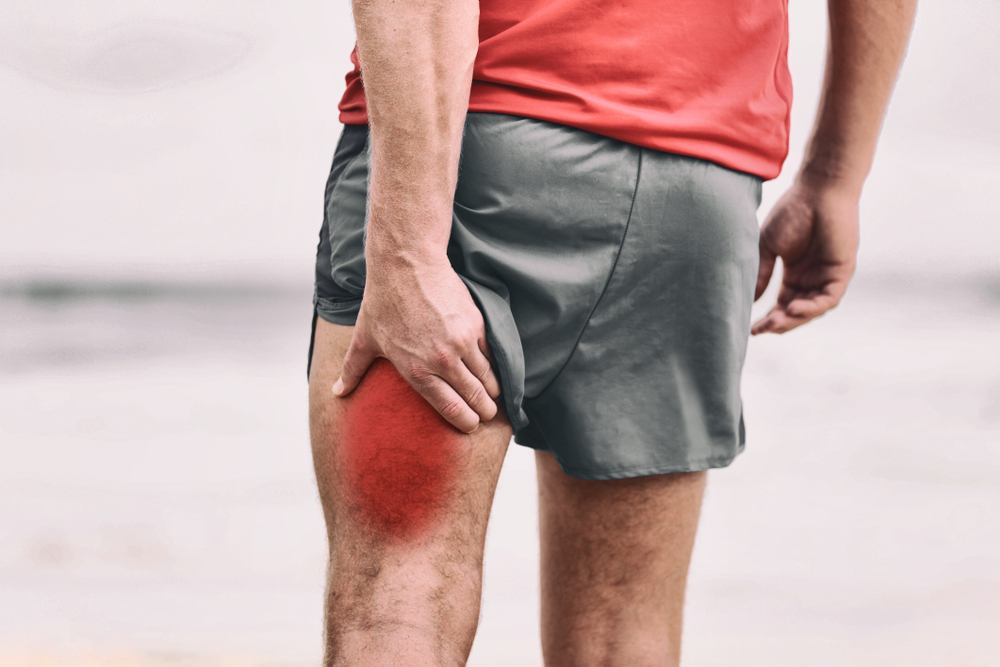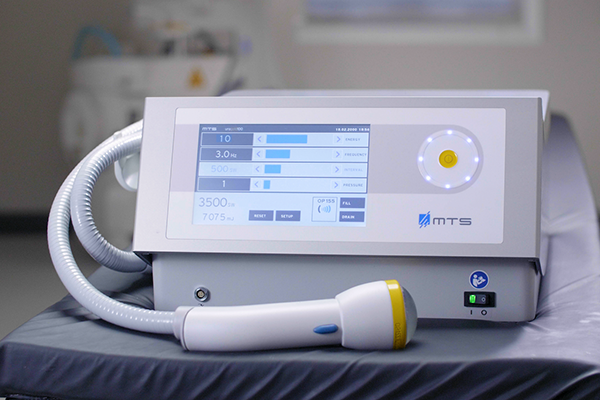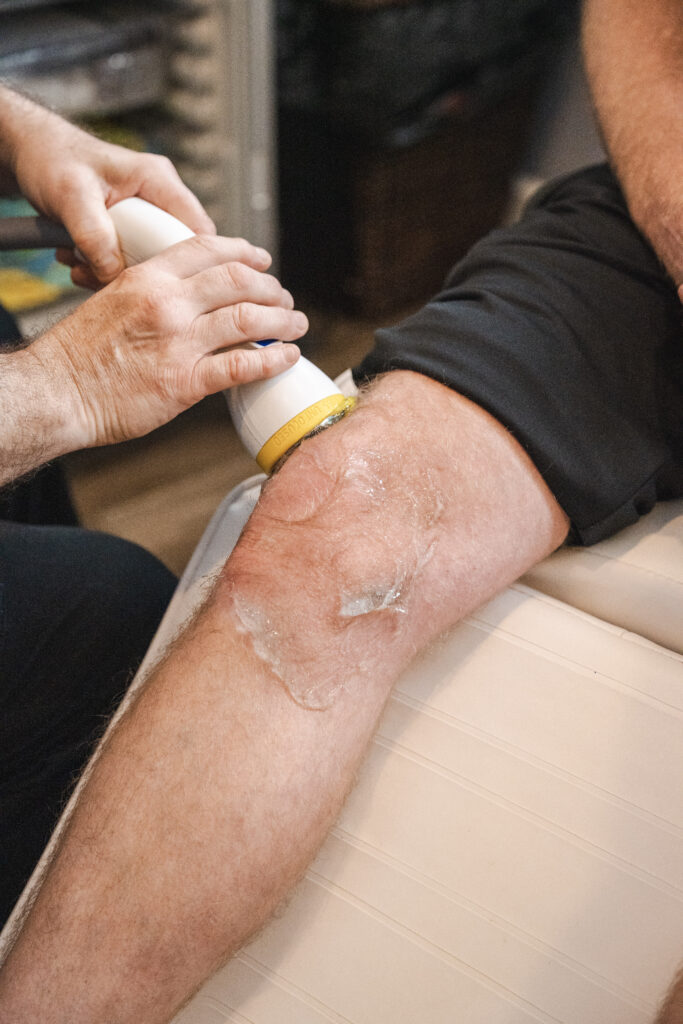Hamstring tendinopathy is an overuse injury resulting from prolonged strain or excessive load on the hamstring tendon. The most common causes of this condition include:
- Overuse and repetitive strain: Frequent and intense activities like running or jumping can lead to microtears in the tendons, which over time results in tendinopathy.
- Sudden and forceful movements: Movements that place an abrupt strain on the hamstring can trigger this condition.
- Muscle imbalances: If one muscle group is stronger than another, it can put undue stress on the hamstrings.
- Previous injuries: A history of hamstring strains or injuries can predispose an individual to tendinopathy.
- Poor flexibility: Tight muscles can place additional strain on the tendons.
It’s important to note that these are just some of the most common causes of hamstring tendinopathy. If you are experiencing hamstring tendinopathy, you can learn if your condition is suitable for treatment and try shockwave therapy with our New Patient Special.
Benefits of Shockwave Therapy for Hamstring Tendinopathy
Shockwave therapy, especially when targeting conditions like gluteal and hamstring tendinopathy, offers an array of advantages that have been recognized by healthcare professionals and patients alike. The procedure’s efficacy stems from its ability to penetrate the body’s tissues and induce physiological responses beneficial for recovery.
Promotes Tissue Repair and Cell Growth
The essence of recovery from any tissue injury lies in the body’s ability to regenerate and repair. Shockwave therapy acts as a catalyst in this process. By directing focused shockwaves to the injury site, it instigates cellular activities, enhancing microcirculation and collagen production. Over time, this promotes healthier tissue growth, ensuring that the hamstring tendon heals optimally, ready to endure the strains of daily activities.
Reduced Dependency on Medications
Conventional treatments for hamstring tendinopathy often involve the use of medications that may carry undesirable side effects. Shockwave therapy presents a medication-free alternative that can diminish the reliance on pain-relieving drugs or other treatments. This aspect makes it especially appealing to those inclined towards non-pharmaceutical interventions.
Restores Mobility
Shockwave therapy, by healing the tendon from within, ensures that the range of motion is restored. The rejuvenated tendon becomes more resilient, allowing patients to gradually return to their regular activities, be it running, jumping, or even simple tasks like walking without experiencing pain or discomfort.
Non-Invasive and Safe
In the world of medical treatments, invasiveness often correlates with prolonged recovery and potential risks. Shockwave therapy for hamstring tendinopathy stands out due to its non-invasive nature, making it a preferable option for many. The absence of incisions means no scars or post-procedural infections.
Overall, shockwave therapy is a promising treatment option for those suffering from hamstring tendinopathy.
How Shockwave Therapy Works
Shockwave therapy has proven its efficacy as a non-invasive treatment option for various musculoskeletal disorders. Particularly for issues like hamstring tendinopathy and its close counterpart, gluteal tendinopathy, this therapy uses high-energy acoustic waves to jumpstart the body’s natural healing processes. Let’s dive into its mechanism:
What is a Shockwave?
Shock waves are akin to sound waves, but they carry much more energy. They consist of a rapid increase in pressure or a high-pressure surge, which is quickly followed by a negative pressure. We encounter these shock waves during thunderstorms, explosions, or even when supersonic jets pass overhead. It’s this intense energy that can be harnessed for medical purposes.
How do Shockwaves Treat Hamstring Tendinopathy?
Hamstring tendinopathy, especially high hamstring tendinopathy and proximal hamstring tendinopathy, results from wear and tear, overuse, or direct injury to the tendons. Using a specialized device, shockwaves are targeted to the affected hamstring area. These shockwaves not only boost blood flow but also stimulate cellular repair processes and collagen production. As a result, they help in reducing inflammation, alleviating pain, and rejuvenating the tendon’s health.
Types of Shockwave Therapy
There are multiple forms of shockwave therapy available, each tailored to specific therapeutic needs. The most prevalent ones include radial shockwave therapy (RSWT), focused shockwave therapy (FSWT), acoustic wave therapy (AWT), and unfocused shockwave therapy.
Radial Shockwave Therapy (RSWT): Employing a hand-held apparatus, RSWT emits pressure waves onto the skin’s surface. Although it is frequently used for afflictions like plantar fasciitis, Achilles tendinopathy, and tennis elbow, its depth of penetration might be insufficient for profound injuries like hamstring tendinopathy. As a result, several sessions might be warranted.
Focused Shockwave Therapy (FSWT): With this modality, a device discharges high-intensity shockwaves pinpointedly to the compromised area. This method finds extensive application in chronic ailments such as deep hamstring injuries or stubborn fractures. Nevertheless, some individuals might find the process somewhat uneasy, and customization in intensity might be necessary according to individual tolerance.
Acoustic Wave Therapy (AWT): This technique uses a device to administer low-intensity shockwaves, aiming to enhance blood circulation, diminish pain and swelling, and boost tissue recuperation. Despite its versatility, which includes treating conditions like erectile dysfunction, its gentler shockwaves might not be potent enough for certain intense conditions.
Unfocused Shockwave Therapy: Unfocused Shockwave Therapy emits low-intensity shockwaves that cover a broader and wider tissue region (7cm x 12cm) in contrast to focused shockwaves (1cm x 12cm) or radial waves (2cm x 2cm). In the US, SoftWave for hamstring pain stands out as the only unfocused shockwave treatment option. While it addresses the same ailments as its focused counterpart, it offers enhanced alleviation for extensive joint and muscular problems, including those in the shoulder, neck, and back. Additionally, treatments with unfocused shockwaves often demand fewer sessions compared to their radial or focused alternatives.






